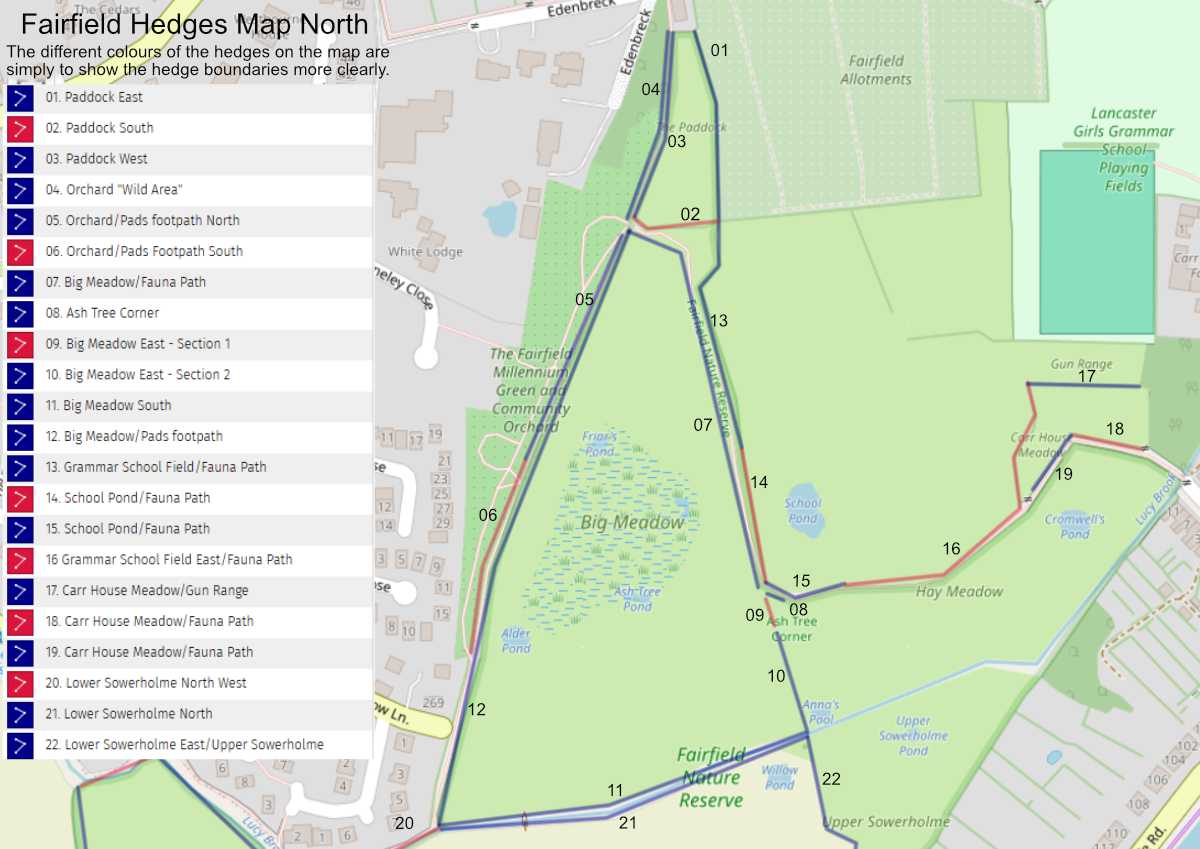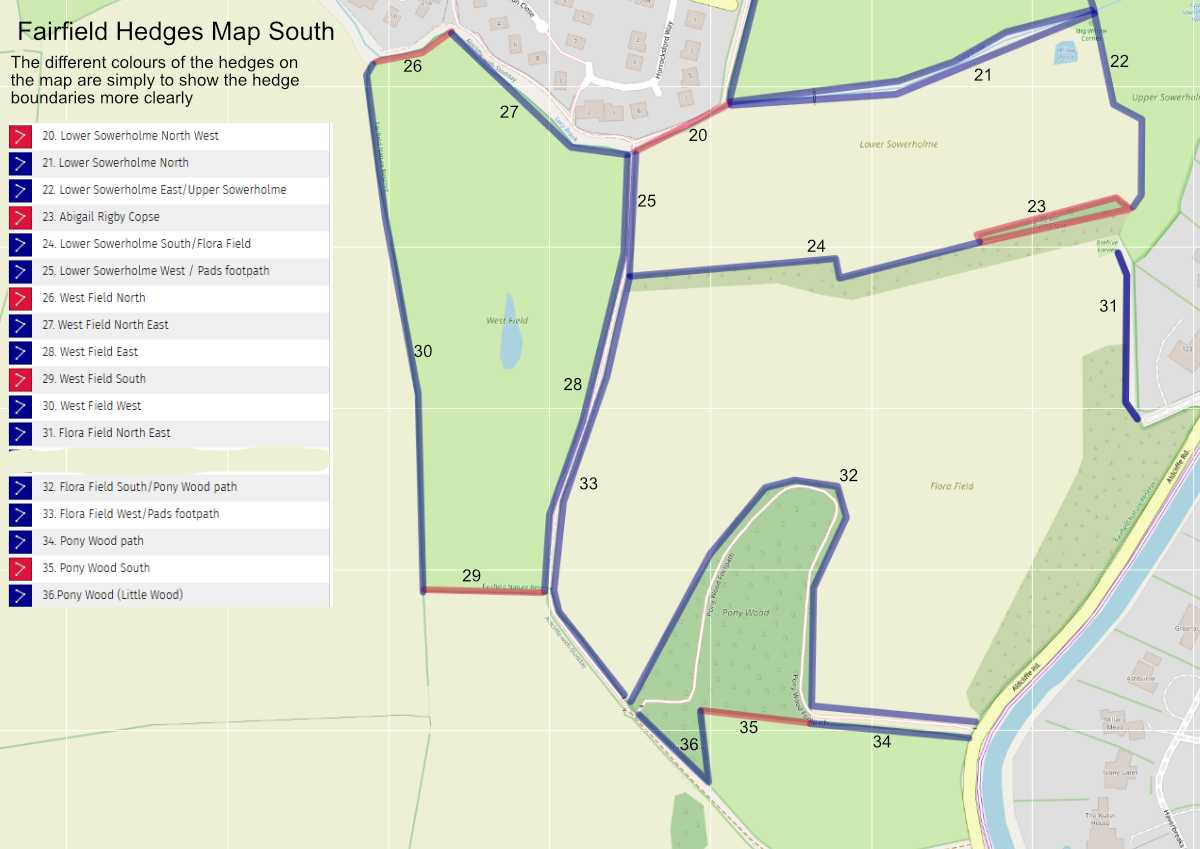Hedges
The Fairfield Association manages well over 2km of hedges. They vary considerably in age, ranging from long established e.g. along The Pads to very recent, e.g. along the Pony Wood path.
Hedge laying
Hedges are maintained by volunteers, some of whom are trained in hedge laying in the local Lancashire and Westmorland style which is designed for both cattle and sheep.
Hedges plan
There is a detailed plan of maintenance which the volunteers use.

About
Varieties
Older hedges were predominantly hawthorn. We have used a variety of species (blackthorn, hazel, holly, dog rose and rowan as well as hawthorn) to fill gaps in existing hedges and when planting new ones.
Purpose
Hedges provide a valuable habitat for wildlife: food for insects and birds, navigation channels, places to hide and nesting sites. Wide, dense hedges which have flowering plants such as blackthorn in spring and berries in winter are the most successful.
Size
We aim for a wide diversity of hedge habitat, not just in terms of species composition but also in height and width. Some, such as from the Paddock along the Fauna path are left to expand upwards and outwards. Others, such as adjacent to the Orchard are trimmed back to avoid shading the fruit trees.
Development
Since 2014 extensive new hedging has been planted, including the doubling of the West Field west hedge.
We hope to continue such wildlife encouraging projects in the future and to continue to use community planting involving local people.
Hedge Maps

Fairfield Hedges Map North (PDF)
Single page PDF for download. For more information about each hedge, see the Hedges Plan.

Fairfield Hedges Map South (PDF)
Single page PDF for download. For more information about each hedge, see the Hedges Plan.
Maintenance
Long-term
- To maintain vigour and low dense growth all hedges are laid around 10 years after planting and around every 15 years thereafter.
- The laying and trimming programme we have followed since 2014 ensures that the hedges across the reserve are at different stages of the maintenance cycle and provide a wide range of habitats for wildlife.
Seasonal
- Spring and summer. No work is done during the bird nesting season other than trimming back to keep our paths clear.
- Autumn and winter are when hedges are laid and selectively trimmed to the appropriate height and width for their location. As far as possible we ensure that at least one third of each hedge is left each year for berries to form.
Look out for
Green finch at the corner of the Fauna path by the Paddock. Examples of old and new hedge-laying along the Long Pads


